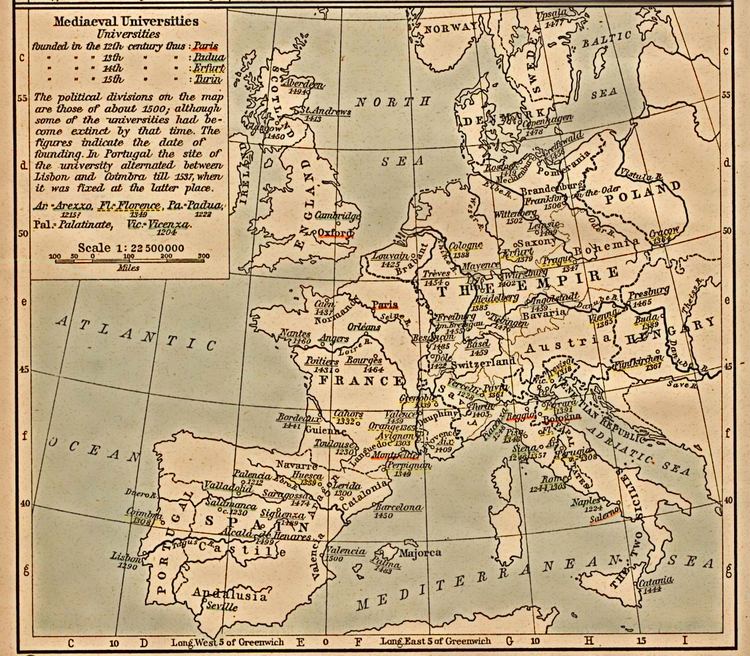 | ||
This article contains a list of the oldest existing universities in continuous operation in the world. Inclusion in this list is determined by the date at which the educational institute met the traditional definition of a university although it may have existed as a different kind of institute before that time. This definition limits the term "university" to institutions with distinctive structural and legal features that developed in Europe, and which make the university form different from other institutions of higher learning in the pre-modern world. Thus, for the list below, the university must have been founded before 1500 in Europe or be the oldest university derived from the medieval European model in a country or region. It must also be still in operation, with institutional continuity retained throughout its history, and so some early universities, most notably the University of Paris, which was suspended from 1793 to 1896, are excluded.
Contents
- Medieval origins
- Modern spread
- Oldest universities by country or region after 1500 still in operation
- Europe
- Canada Greenland and the United States
- References
The word university is derived from the Latin: universitas magistrorum et scholarium, which approximately means "community of teachers and scholars". The term was coined by the Italian University of Bologna, which, with a traditional founding date of 1088, is considered to be the first university. The origin of many medieval universities can be traced back to the Christian cathedral schools or monastic schools, which appeared as early as the 6th century and were run for hundreds of years as such before their formal establishment as universities in the high medieval period.
Other institutions of higher learning, such as those of ancient Greece, ancient Persia, ancient Rome, Byzantium, ancient China, ancient India and the Islamic world, are not included in this list owing to their cultural, historical, structural and juristic dissimilarities from the medieval European university from which the modern university evolved.
Medieval origins
The university as an institution was historically rooted in medieval society, which it in turn influenced and shaped:
The university is a European institution; indeed, it is the European institution par excellence. There are various reasons for this assertion. As a community of teachers and taught, accorded certain rights, such as administrative autonomy and the determination and realisation of curricula (courses of study) and of the objectives of research as well as the award of publicly recognised degrees, it is a creation of medieval Europe, which was the Europe of papal Christianity [...].
Modern spread
From the early modern period onwards, the university gradually spread from the medieval Latin West across the globe, eventually replacing all other higher-learning institutions and becoming the preeminent institution for higher education everywhere. This process occurred in the following chronological order:
Oldest universities by country or region after 1500 still in operation
The majority of European countries had universities by 1500. After 1500, universities began to spread to other countries all over the world. Note that many universities were established at institutes of learning such as schools and colleges that may have been founded significantly earlier but were not classed as universities upon their foundation; this is normally described in the notes for that institution.
Europe
While Europe had 143 universities in 1789, the Napoleonic wars took a heavy toll, reducing the number to 83 by 1815. The universities of France were abolished and over half of the universities in both Germany and Spain were destroyed. By the mid 19th century, Europe had recovered to 98 universities.
Canada, Greenland and the United States
In the United States, the colonial colleges awarded degrees from their foundation, but none were formally named as universities prior to the American Revolution, leading to various claims to be the first university in the United States. The earliest Canadian institutions were founded as colleges, without degree awarding powers, and gained degree granting authority and university status later.
